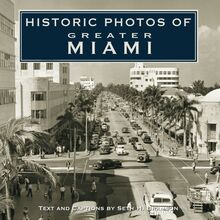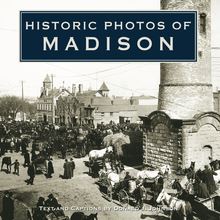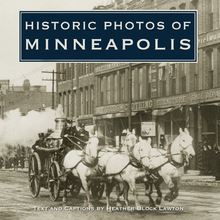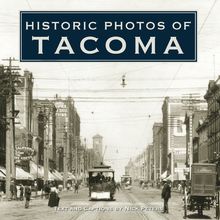Historic Photos of Austin , livre ebook
95
pages
English
Ebooks
2006
Vous pourrez modifier la taille du texte de cet ouvrage
Obtenez un accès à la bibliothèque pour le consulter en ligne En savoir plus
Découvre YouScribe en t'inscrivant gratuitement
Découvre YouScribe en t'inscrivant gratuitement
95
pages
English
Ebooks
2006
Vous pourrez modifier la taille du texte de cet ouvrage
Obtenez un accès à la bibliothèque pour le consulter en ligne En savoir plus
Publié par
Date de parution
01 octobre 2006
Nombre de lectures
0
EAN13
9781618586018
Langue
English
Poids de l'ouvrage
13 Mo
Publié par
Date de parution
01 octobre 2006
Nombre de lectures
0
EAN13
9781618586018
Langue
English
Poids de l'ouvrage
13 Mo
HISTORIC PHOTOS OF
AUSTIN
T EXT AND C APTIONS BY M ARSIA H ART R EESE
The Post Office took ten years to build and was completed in 1880 at the corner of Pecan (Sixth) and Colorado streets. Also called the Federal Building because of its federal courtrooms, it was where the embezzlement trial of William Sydney Porter (O. Henry) was held. That s why it is now called O. Henry Hall. Next door (right) was the splendid Hancock Opera House, which opened in 1896, and behind was the Masonic Temple.
HISTORIC PHOTOS OF
AUSTIN
Turner Publishing Company
200 4th Avenue North Suite 950
Nashville, Tennessee 37219 (615) 255-2665
www.turnerpublishing.com
Historic Photos of Austin
Copyright 2006 Turner Publishing Company
All rights reserved.
This book or any part thereof may not be reproduced or transmitted in any form or by any means, electronic or mechanical, including photocopying, recording, or by any information storage and retrieval system, without permission in writing from the publisher.
Library of Congress Control Number: 2006929280
ISBN-10: 1-59652-295-X
ISBN-13: 978-1-59652-295-4
Printed in the United States of America
09 10 11 12 13 14 15 16 17-0 9 8 7 6 5 4 3 2
C ONTENTS
A CKNOWLEDGMENTS
P REFACE
A N A USPICIOUS L OCATION (1838-1899)
A N E RA OF P ROGRESS (1900-1919)
E LATION AND D EPRESSION (1920-1940)
W AR , P EACE, AND A CTIVISM (1941-1979)
N OTES ON THE P HOTOGRAPHS
After the Austin Dam was built, creating Lake McDonald, Austinites and visitors enjoyed many a ride on the lake aboard the Ben Hur , a pleasure-cruise steamboat. For 50 , one could take a tour that lasted more than three hours, and dances were frequently held on the decks after sundown. The Ben Hur was literally grounded during the flood of 1900.
A CKNOWLEDGMENTS
This volume, Historic Photos of Austin , is the result of the cooperation and efforts of many individuals, organizations, institutions, and corporations. It is with great thanks that we acknowledge the valuable contribution of the following for their generous support:
Austin History Center
Library of Congress
Lyndon Baines Johnson Library and Museum
Texas State Library and Archives Commission
We would also like to thank the following individuals for their valuable contributions and assistance in making this work possible:
Marsia Hart Reese, Writer and Editor
John Anderson, Archives and Information Services, Texas State Library
P REFACE
Austin has thousands of historic photographs that reside in archives, both locally and nationally. This book began with the observation that, while those photographs are of great interest to many, they are not easily accessible. During a time when Austin is looking ahead and evaluating its future course, many people are asking, How do we treat the past? These decisions affect every aspect of the city-architecture, public spaces, commerce, and infrastructure-and these, in turn, affect the way that people live their lives. This book seeks to provide easy access to a valuable, objective look into the history of Austin.
The power of photographs is that they are less subjective than words in their treatment of history. Although the photographer can make decisions regarding subject matter and how to capture and present it, photographs do not provide the breadth of interpretation that text does. For this reason, they offer an original, untainted perspective that allows the viewer to interpret and observe.
This project represents countless hours of review and research. The researchers and writer have reviewed thousands of photographs in numerous archives. We greatly appreciate the generous assistance of the individuals and organizations listed in the acknowledgments of this work, without whom this project could not have been completed.
The goal in publishing this work is to provide broader access to this set of extraordinary photographs that seek to inspire, provide perspective, and evoke insight that might assist people who are responsible for determining Austin s future. In addition, the book seeks to preserve the past with adequate respect and reverence.
With the exception of touching up imperfections that have accrued with the passage of time and cropping where necessary, no other changes have been made. The focus and clarity of many images is limited to the technology and the ability of the photographer at the time they were taken.
The work is divided into eras. Beginning with some of the earliest known photographs of Austin, the first section records photographs from before the Civil War through the end of the nineteenth century. The second section spans the beginning of the twentieth century through World War I. Section three moves from World War I to World War II. The last section covers from World War II to the 1970s.
In each of these sections we have made an effort to capture various aspects of life through our selection of photographs. People, commerce, transportation, infrastructure, religious institutions, and educational institutions have been included to provide a broad perspective.
We encourage readers to reflect as they go walking in Austin, strolling through the city, its parks, and its neighborhoods. It is the publisher s hope that in utilizing this work, longtime residents will learn something new and that new residents will gain a perspective on where Austin has been, so that each can contribute to its future.
-Todd Bottorff, Publisher
Judge Edwin Waller planned the layout of Austin in 1839, at the request of his friend Mirabeau B. Lamar, president of the Republic of Texas. Waller had signed the Texas Declaration of Independence and became Austin s first mayor. He named north-south streets for Texas rivers and east-west streets for Texas trees.
A N A USPICIOUS L OCATION
(1838-1899)
The land that would become Austin was nestled among slopes of the Central Texas Hill Country on the banks of Texas Colorado River. Mirabeau B. Lamar, president of the new Republic of Texas, encountered the area in 1838 while buffalo hunting. On the riverbank was the tiny settlement of Waterloo, soon renamed Austin to honor Stephen F. Austin, who had brought the first settlers to Texas in the 1820s. In 1839, Lamar s friend Edwin Waller laid out the city and began construction, naming north-south streets for Texas rivers and east-west streets for Texas trees.
After struggles over the capital s location (Sam Houston called the area the most unfortunate site upon earth for the Seat of Government ), Austin became the temporary capital in 1845 when Texas joined the United States. In 1872, another statewide election established Austin as the permanent capital.
Although most Austinites opposed secession from the Union, the majority of Texas voters supported it. The Austin Light Infantry Company was formed in 1861, as was the Ladies Needle Battalion (which sewed uniforms for Confederate volunteers). In 1864, hundreds of Austinites assembled for the funeral of General Tom Green, and the next year, news of the Emancipation Proclamation finally reached town. Union troops occupied Austin in 1865. Freed African Americans opened the Freedmen s Bureau School in 1868, the first school for black children. A pontoon bridge across the Colorado was completed in 1869 but washed away within a year. The Democratic Statesman , forerunner of today s major local newspaper, published its first issue in 1871, and on Christmas Day the Houston and Texas Central Railroad completed the first railway to the capital city, igniting an economic boom.
The 1880s saw many signs of growth: the opening of the University of Texas, the first telephone, a public hospital, a permanent bridge across the Colorado, the Driskill Hotel. The capitol building burned in 1881, but by 1888 a splendid pink granite capitol had replaced it. During the bustling 1890s Austin enjoyed its first dam and electric utility system, national banks, electric streetcars, the first residential subdivision (Hyde Park), the Hancock Opera House, and 31 moonlight towers to illuminate streets. Austinite William Sydney Porter (O. Henry) published a newspaper called The Rolling Stone , and football became a competitive sport at the university.
This view of Austin from the east shows the first permanent capitol building, completed in 1853, its height and dome setting it apart. The building s architectural style was a variation of Greek Revival. Previous capitols had been first a log cabin and then a simple frame structure. The photograph was taken by H. B. Hillyer, a professional photographer.
This view shows the 1853 Texas Capitol at the head of Congress Avenue in the early 1870s. By this time, some people were criticizing the statehouse as lacking distinction. Private businesses and government buildings with limestone and brick facades lined the Avenue, along with saloons such as the Iron Front. This capitol burned in 1881, and plans soon began for building a bigger and better one.
Austin s volunteer fire department was organized by John Bremond and William Walsh in the summer of 1858 as Hook and Ladder Company Number One. The fire station pictured here, built later, was on Hickory (Eighth Street) next to City Hall. A local newspaper noted in 1881, The most prominent bankers, merchants, and professional men in Austin are firemen.
This imposing three-story structure with raised basement opened in March 1861 at what was then the northern outskirts of town. Texas s oldest hospital for the mentally ill, it was originally called the State Lunatic Asylum, but later the name was changed to the more humane Austin State Hospital. On opening day there were approximately 12 resident patients.
This 1866 photograph of Pecan Street (later Sixth Street) makes it difficult to imagine that it would become Austin s major east-west thoroughfare. The photographer, W. J. Oliphant, took the picture from his upstairs studio at the corner of Pecan and Brazos streets, where the Driskill Hotel now














